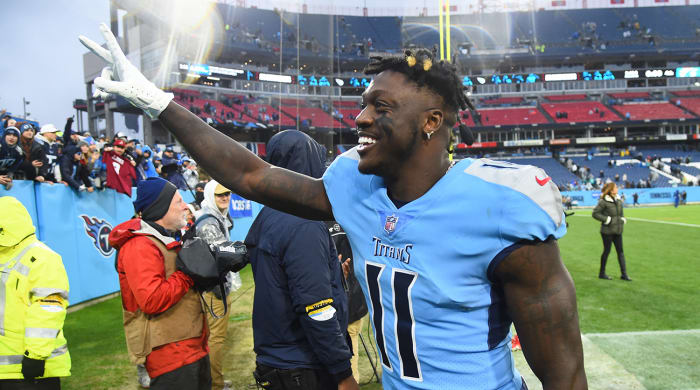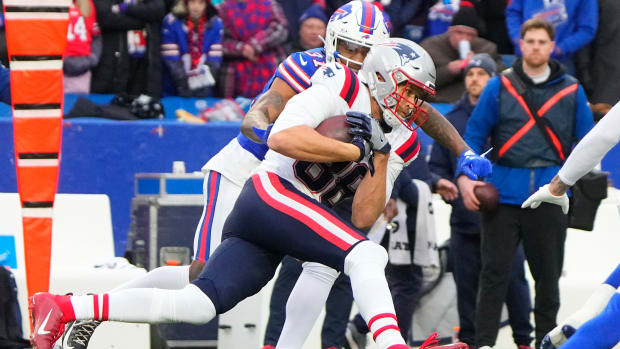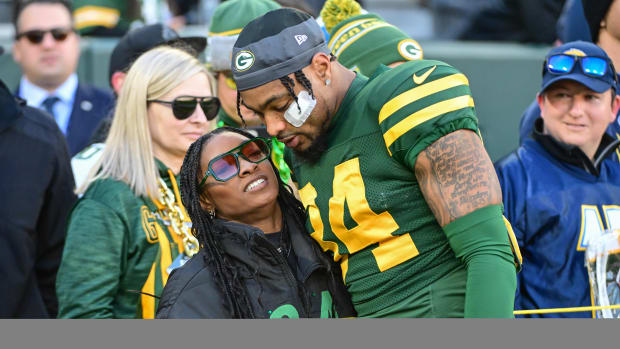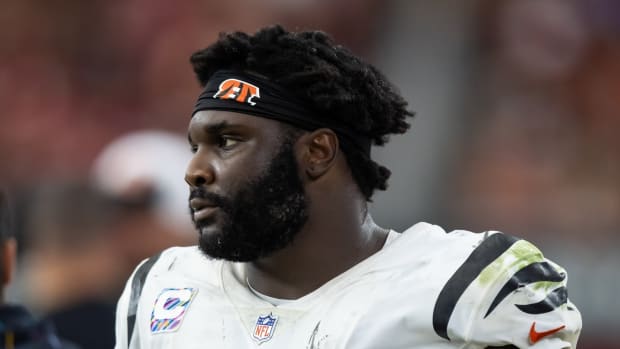Business of the NFL Draft: A.J. Brown, Wide Receiver Trades the Story of the Offseason
Before getting to the business of football, a thought after doing a couple of speaking engagements last week to groups who know football mostly as fútbol.
American vs. European Model
I spoke to a couple of groups from UEFA, both front office executives for soccer clubs and former players, including the world-famous Kaká (quite a good student). As I prepared for my talks comparing the American sports system and the European landscape, I, as I always seem to be, was struck by the contrast.
Compared to the American model, the European model—or any sports model, for that matter—seems like the Wild West. The business of American sports, especially the NFL, is very much what I call a “Law and Order” business. The NFL has baked into its DNA many systematic rules, regulations, dos and don’ts that are absent from many other sports models. Those restraints include the draft, the salary cap and limitations on free agency (number of years required, franchise tag, compensatory draft picks, etc)—all restraints that the more free-flowing, less restrictive European soccer model finds strange. Sure, UEFA has instituted Financial Fair Play guidelines, but they are a far cry from the salary cap. And then there is the draft.
The Europeans had such an interesting reaction to the draft, something that just happened in the NFL with so much fanfare and attention. The idea of players being “drafted” makes no sense in any other context, even to sports executives who understand the concept of competitive balance. You mean to say, they would ask, that a player growing up in Florida his whole life who then goes to college in a place like Texas can be drafted by a team from Green Bay or Buffalo? Most readers of this space are saying, Well, yes, what’s wrong with that? What seems commonplace and natural to us Americans is truly foreign to foreigners.
And a final note on a question from some players who played for Manchester United and Manchester City. As we were meeting, the NFL announced its foreign games, to which I got the question they ask every year: Why do they keep sending the Jacksonville Jaguars to London? Inquiring minds…
Brown Trade Adds to the Offseason of the Wide Receiver
Even with the movement at quarterback this offseason, the transformation of the power—and potential team strategies—at the wide receiver position is “the issue” of the 2022 offseason.
Christian Kirk started things in free agency, as Jacksonville overpaid to attract him to the lowly Jaguars (see the question above). Then Davante Adams and Tyreek Hill forced their way out of receiving passes from Aaron Rodgers and Patrick Mahomes to get to new teams—the Raiders and Dolphins—willing to pay them at a new level for the position, as the Packers and Chiefs took the cap space and draft picks. This transformation and team decision-making at wide receiver carried over into the draft last week with a rare blockbuster trade involving, of course, an elite wide receiver.
The Eagles did what the Raiders and Dolphins did earlier in the offseason: (1) trade for a star receiver, in this case A.J. Brown, who’s having financial and/or relational issues with his team, and (2) pay that star receiver at a new top-of-market market rate.
The Brown situation, in my opinion, is even more a game-changer than what happened with Kirk, Adams and Hill. Kirk was a free agent; that brings up a different kind of leverage. Adams and Hill have had many years of elevated performance for Super Bowl–contending teams. Brown, however, is neither a free agent nor a player with a long history in the league. His situation is similar to that of Deebo Samuel, an ascending player still in his rookie contract. As the 49ers are doing with Samuel, the Titans could simply not react to any rumbles of discontent from Brown. They both represent great value for their teams: high-performing young players with a year left on an undervalued rookie contract.
Brown, unlike Samuel, was able to hit the trifecta: (1) a trade out of Tennessee, (2) a massive new contract at the level of players with much longer histories of production, and (3) a reunion with his old friend Jalen Hurts on a more visible and valuable franchise.
A Question of Value
Brown’s situation has teams taking notice, and I believe it was a good part of the reason why so many receivers were chosen early in the draft (six of the first 20 picks were wide receivers, and 17 were picked in the first three rounds). Teams are seeing exactly what I have just written about and they’re giving themselves a long window before the players hit their leverage point.
The position of wide receiver used to be a low-value position, one where teams would say, You can get always find them, along with running back, linebacker, safety, guard and tight end. Now, wide receiver is becoming more highly valued, due to more open and prolific offenses and, in turn, the financial value accorded to top players at the position. Wideout is approaching the importance of quarterback, left tackle, pass rusher and shutdown cornerback.
Team presidents I’ve talked with are keenly aware of this transformation. We have now seen at least three teams—Packers, Chiefs and Titans—take the following strategy: (1) opt out of paying their star receiver at a higher level, (2) trade them for draft picks and cap space, and (3) go young (and cheap) to replace them. After trading away their star receivers, all three teams drafted wide receivers in the first or second round.
Christian Watson (Packers), Skyy Moore (Chiefs) and Treylon Burks (Titans) almost certainly won’t rise to the level of Adams, Hill and Brown anytime soon. The acquiring teams—Raiders, Dolphins and Eagles—will clearly receive more on-field value in the short term. But that is just a short-term snapshot, and does not take into account the aspect of financial value.
Consider this: Will Adams, Hill and Brown—at roughly $24 million per year—be eight times more valuable than Watson, Moore and Burks at roughly $3 million per year? A fair question can now be asked about which teams are getting the better value. As with almost all things, we will see.
Rookie Contract Non-Negotiations
Finally, speaking of draft picks, I harken back to the old days in the early 2000s when signing them to their first contracts required actual negotiations. I would sit around the Packers’ offices by myself in June and July, when all our coaches and scouts were on vacation, banging my head against the wall trying to sign draft picks. Agents all wanted to wait to avoid looking bad by being the first to sign.
Now, just over a week after the draft, several teams have signed or are close to signing their entire draft classes.
The last two collective bargaining agreements “pre-negotiated” for draftees; their contract amount is known the minute they are selected. The only negotiation items are issues such as payment terms for signing bonus, forfeiture language and, in the case of top picks, potential offset of future guarantees. The CBA has removed any drama involved in rookie contract negotiations and, oh by the way, increased penalties for rookie holdouts.
And the lack of negotiation is now being reflected in agent fees, many of which are 1% or even lower for negotiation of rookie contracts. Agents perform a lot of services for rookie players; unfortunately for them, their compensation model is tied to one of the easier things that they do: negotiation of the pre-determined contract.
More NFL Coverage:
• MAQB: What You Might Not Like About MNF’s ‘Doubleheaders’
• MMQB: The Falcons’ Strange Offseason, Remaining Free Agents
• What the NFL Didn’t Reveal About Its Browns Investigation
• Biggest Draft Takeaways From Around the NFL







































